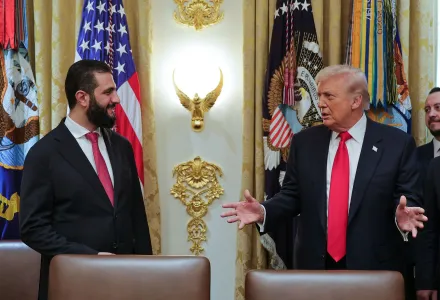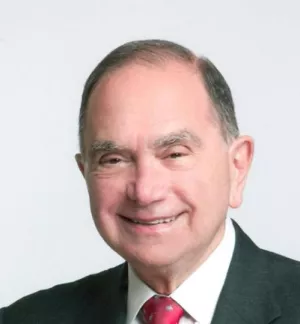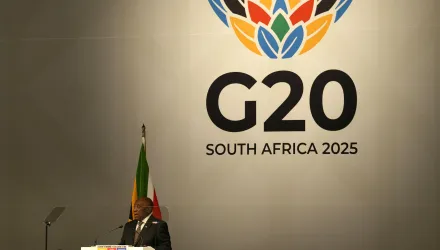
Syria’s Transition and the Stakes of Unity
After more than five decades of authoritarian rule under Hafez al-Assad and his son Bashar al-Assad, Syria has entered an uncertain but irreversible transition. The fall of Bashar al-Assad in December 2024 ended a dynastic era but left the state fractured and society deeply scarred. Transitional President Ahmed al-Sharaa faces the monumental task of restoring a unified state that reflects Syria’s multiconfessional and multiethnic character while rebuilding national institutions nearly destroyed by war and repression.
In March 2025, al-Sharaa announced a transitional government and a “Constitutional Declaration” establishing a five-year transition toward elections and a permanent constitution. On paper, the cabinet included Alawite, Druze, Kurdish, Christian, and Sunni figures, as well as some technocrats, but questions quickly emerged over whether this diversity reflected genuine inclusion or merely an image of unity amid a deep territorial and institutional vacuum. In the north and east, the Kurdish-led Syrian Democratic Forces (SDF) continued to administer large territories and vital resources. In March 2025, a framework was reached to integrate SDF civilian and security structures into the national institutions—an agreement hailed as a breakthrough yet still contested on the ground. The October 2025 limited parliamentary elections, the first since Assad’s fall, marked a symbolic step forward but were not held in Suwayda or Kurdish-controlled areas, pending the creation of a “safe environment.” Intercommunal violence on the coast and in Suwayda and clashes between the army and Kurdish forces around Aleppo underscore how fragile the transition remains.
In this fragmented environment, external actors hold considerable sway. Al-Sharaa’s capacity to navigate competing regional and global interests will determine whether Syria moves toward genuine unity or reverts to zones of influence and proxy control.
Turkey
Turkey retains significant influence in northern Syria, where it has directly intervened militarily to shape the conflict in their favor. In 2016, the priority of Turkey pivoted to curbing aspirations for Kurdish autonomy. President Erdoğan’s government continues to view any empowered SDF presence along its border as an existential security threat. The integration deal between Damascus and the SDF is therefore the main variable shaping Ankara’s approach.
Thus far, Turkey has welcomed al-Sharaa’s effort to re-centralize Syria while maintaining de facto control over northern border security zones. If Damascus can bring Kurdish forces under central command and limits their political autonomy, Turkey may gradually reduce its military footprint. However, any perceived Kurdish gains could trigger new Turkish interventions that would undermine the transition.
The United States
The United States has moved from containment to engagement with the new Syrian leadership. Washington has retained a limited military presence in the northeast to support counter-ISIS operations and to support the SDF integration. Sanctions have been eased to facilitate humanitarian and reconstruction aid.
The United States has encouraged dialogue between Damascus and Jerusalem on border security and has coordinated with Gulf partners to channel investment into reconstruction projects. It has also pressed for Syria’s inclusion in the regional coalition against ISIS, a move that would lend the new government international legitimacy while testing its ability to manage sectarian tensions and extremist risks. Washington views al-Sharaa’s Syria as a potential partner if it remains restrained and becomes inclusive—but reserves pressure tools should authoritarian reflexes re-emerge.
Russia
Moscow’s military support was crucial to the Assads’ survival, but its influence has waned since Bashar’s downfall. Nevertheless, Russia remains a central actor. Al-Sharaa’s October 2025 visit to Moscow signaled his intent to maintain a strategic relationship while redefining its terms. The Kremlin has recognized the transitional government and secured assurances that its bases at Tartus and Hmeimim will continue to operate under renewed bilateral agreements.
For Russia, the priority is to preserve its strategic foothold without being drawn into new conflicts. It views a stable, unitary Syria as preferable to a chaotic one dominated by rival powers. In return for political support and technical assistance in rebuilding security institutions, Moscow expects economic concessions and a voice in foreign policy deliberations. Its continued engagement gives al-Sharaa some deterrent leverage but also limits his strategic autonomy.
Gulf States and Arab Neighbors
Relations between Syria and its Arab neighbors have shifted from estrangement to re-engagement. The Gulf states see al-Sharaa’s rise as an opportunity to re-anchor Syria in the Arab fold and to reduce Iranian influence. Saudi Arabia– which took the initiative to introduce al-Sharaa to President Trump– and Qatar have engaged diplomatically and economically, pledging reconstruction funds tied to governance benchmarks and anti-corruption measures. They are especially interested in rule-of-law reforms that protect investments and reduce the risk of sanctions exposure. The UAE has also engaged but more cautiously. Jordan has positioned itself as a regional mediator, facilitating border security talks and cooperation on refugee returns.
The extent of Arab support will depend on al-Sharaa’s capacity to deliver inclusive governance, restrain sectarian revenge, and align with a regional security consensus that favors stability over ideology. If he succeeds, Gulf and Arab support could be the most significant external boost for Syrian unity and reconstruction.
Israel
Israel and Syria remain technically at war, and the Golan Heights remains a core territorial dispute. Following the collapse of the Assad state, Israeli forces expanded their presence in the UN-monitored buffer zone and maintained a forward deployment to prevent any hostile militias from gaining ground. Israel’s government has stated that it will not withdraw until Syria can guarantee demilitarization and control of its southern front. At the same time, Israel has provided support to Druze communities in southern Syria as a stabilizing measure and to create direct leverage in southern Syria.
Some Israeli officials still view a fragmented Syria as strategically preferable. For example, the Israeli foreign minister is reported to have stated that Israel would prefer to see Syria devolve into statelets rather than become a strong unitary state that could threaten Israel. However, the emerging consensus in Jerusalem appears to accept a weak but unified neighbor if it ensures border security and halts Iranian activity. Periodic Israeli airstrikes on Iran-linked targets inside Syria serve as reminders that the path to normalization will be defined by security assurances, not rhetoric.
Iran
Under the Assad regime, Iran entrenched itself in Syria’s military, economic, and religious landscape. Yet with the regime collapse in December 2024, Tehran’s leverage is markedly reduced. Al-Sharaa has distanced himself from Iran’s influence, denouncing its sectarian policies and signaling that the new Syria will not be a platform for Iran’s regional confrontation with Israel or Arab states.
Still, remnants of Iranian-aligned figures still operate in central and southern Syria, even though the connection between them and Tehran today is not clear. Tehran’s capacity to shape events now depends on exploiting instability—particularly if tensions flare between the central government and Alawite, Druze, or Kurdish factions. Iran’s re-entry into Syria’s internal equation would alienate almost every other power: Israel, Turkey, and Saudi Arabia would all see such a move as provocative, while domestic opinion remains deeply anti-Iranian. In short, Tehran has little to offer beyond problems. The depth of political distance between al-Sharaa and Iran is unprecedented, and Damascus appears intent on avoiding any alliance that could undermine its legitimacy or its regional rehabilitation.
While Iran’s direct leverage has diminished, it may pursue a hedging strategy, maintaining informal links with local networks while cautiously exploring avenues of rapprochement with the new leadership. Such a dual strategy is consistent with Iran’s regional policy in which it seeks to preserve parallel relationships with both state and non-state actors.
Iraq
Iraq views Syria’s post-Assad transition through a lens of cautious engagement, recognizing that instability across the border directly threatens its own security. Note this engagement is against the backdrop of al-Sharaa previous association with Al-Qaeda in Iraq— and many of the senior leadership of Hay'at Tahrir al-Sham were at one time insurgents in Iraq. The persistence of ISIS remnants in border areas and the risk of renewed Sunni unrest make Syria’s future a matter of national concern. Baghdad advocates an inclusive political process that prevents extremist resurgence, while quietly coordinating border security and intelligence issues with the new Syrian authorities.
At the same time, Iraq has concerns around Shiite shrines in Damascus and Aleppo which risk drawing Iraq into Syria’s internal rivalries. The Kurdish dimension further complicates Baghdad’s balancing act, as it seeks to maintain ties with Syrian Kurds without alienating Turkey or Damascus. Overall, Iraq has opted for a careful, watchful, and engaged approach.
The Interaction of Internal and External Forces
Domestically, al-Sharaa faces the dual challenge of asserting authority and building legitimacy. Sectarian reprisals in Alawite villages and Druze–Bedouin clashes in the south have tested his ability to project impartial governance. Failure to deliver accountability or inclusion would open space for foreign manipulation and local secessionism. The integration of SDF structures into state institutions is a litmus test for whether reunification is possible through negotiation rather than coercion. Similarly, the repatriation of over four million refugees from neighboring countries and Europe will shape the social foundations of any durable state.
Externally, Syria now has a narrow window to re-establish its sovereignty on balanced terms. If al-Sharaa can leverage relations especially with the United States, Russia, Turkey, Iran, Israel and the Gulf States while avoiding dependence on any single power, it would facilitate his recovery of territorial integrity and political space for reform. This is a tall order: remnant militias and foreign-backed groups pose serious obstacles. Any permanent foreign occupation zones in the north or south would delay full sovereignty. At the same time, Western donors are conditioning assistance on credible transitional justice and institutional reform. Failure to meet those benchmarks could stall aid and leave the government exposed to renewed fragmentation.
Conclusion
Under Ahmed al-Sharaa’s leadership, Syria stands at a crossroads. The transition offers both an opportunity for reunification and a test of whether a post-Assad state can transcend the legacy of sectarian rule. External actors will play a decisive role: they can facilitate sovereignty through security guarantees, economic assistance, and political recognition—or they can perpetuate fragmentation by pursuing their own zones of influence.
The success or failure of Syria’s reunification will hinge on two variables: whether foreign powers choose to support a strong but inclusive state, and whether al-Sharaa himself can demonstrate the political dexterity, moderation, and vision required to turn a fragile truce into a new social contract. The coming months will determine if Syria’s unity becomes a reality—or remains a distant aspiration.
Djerejian, Edward. “External States and Syria’s Challenge of Reunification under Transitional President Ahmed al-Sharaa.” Belfer Center for Science and International Affairs, October 29, 2025



